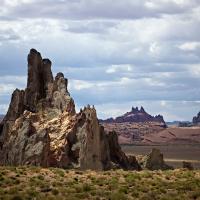Ben Rubinstein
Active member
OK, so far so good. I've given up on using ACR for any point of the wedding basic processing as I learn the C1 workflow that will work for me.
So far it is looking like this. Use Bridge to sort images, cull and rename. I know I could do it in C1 but not as well or as easily as in Bridge. Go to C1 and work the files for colour and exposure then save as TIFF. Go back to Bridge and use ACR to crop and rotate (far quicker in ACR on my machine than C1 which stutters a lot), add or subtract vignetting, spot/dust removal and most importantly, dodge and burn where needed. Send files to PS using one of my custom actions for PTLens, custom curve, sharpening and save as jpg or for conversion to B&W using again a custom action that I made.
Only problem with this is I now have 300 TIFF's from each wedding, not just the RAW's. That's going to eat up a lot of HD space. Question, if I'm saving from C1 and intending to do some dodging and burning (all information in the histogram, no spikes at either end), will I have more info saving from C1 with a 8bit TIFF than a highest quality jpg?
A bit longer than my present workflow, the saving to TIFF is an extra step and I'm not as fluid with C1 yet as I was with ACR, nevermind the slower workflow for applying changes to multiple files, but otherwise I don't think it's going to be that much slower given that the majority of my work in ACR has always been the colour but in C1 suddenly my camera's AWB is almost perfect and a quick tap of the WB tool is all that's needed otherwise. Never had that with ACR!
Guys, I owe you a BIG beer. Anytime you're in Jerusalem or Manchester UK, drinks are on me.
P.S. what's the correct tool in C1 for highlight recovery? Does doing a minus of exposure work as recovery like in ACR or is it all in the highlight tool?
So far it is looking like this. Use Bridge to sort images, cull and rename. I know I could do it in C1 but not as well or as easily as in Bridge. Go to C1 and work the files for colour and exposure then save as TIFF. Go back to Bridge and use ACR to crop and rotate (far quicker in ACR on my machine than C1 which stutters a lot), add or subtract vignetting, spot/dust removal and most importantly, dodge and burn where needed. Send files to PS using one of my custom actions for PTLens, custom curve, sharpening and save as jpg or for conversion to B&W using again a custom action that I made.
Only problem with this is I now have 300 TIFF's from each wedding, not just the RAW's. That's going to eat up a lot of HD space. Question, if I'm saving from C1 and intending to do some dodging and burning (all information in the histogram, no spikes at either end), will I have more info saving from C1 with a 8bit TIFF than a highest quality jpg?
A bit longer than my present workflow, the saving to TIFF is an extra step and I'm not as fluid with C1 yet as I was with ACR, nevermind the slower workflow for applying changes to multiple files, but otherwise I don't think it's going to be that much slower given that the majority of my work in ACR has always been the colour but in C1 suddenly my camera's AWB is almost perfect and a quick tap of the WB tool is all that's needed otherwise. Never had that with ACR!
Guys, I owe you a BIG beer. Anytime you're in Jerusalem or Manchester UK, drinks are on me.
P.S. what's the correct tool in C1 for highlight recovery? Does doing a minus of exposure work as recovery like in ACR or is it all in the highlight tool?
Last edited:

